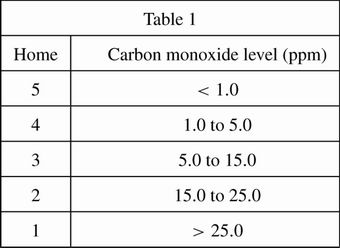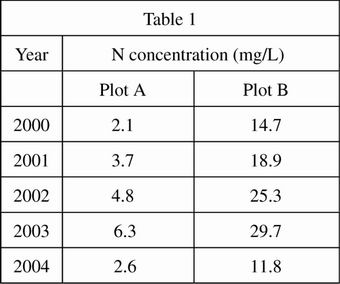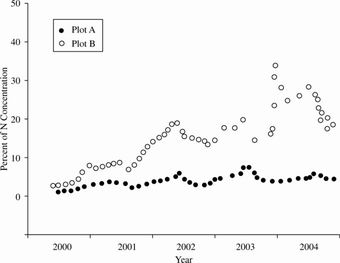
ACT Science Practice Test 60
Đề thi nằm trong bộ sưu tập: Tuyển Tập Bộ Đề Thi Đại Học Hoa Kỳ (ACT) - Có Đáp Án Chi Tiết
Số câu hỏi: 10 câuSố mã đề: 1 đềThời gian: 1 giờ
208,008 lượt xem 15,995 lượt làm bài
Xem trước nội dung:
PASSAGE VI
Carbon monoxide (CO) is a colorless, odorless gas produced by burning material that contains carbon, such as coal or natural gas. Carbon monoxide is the leading cause of accidental poisoning deaths in America. The Centers for Disease Control estimates that carbon monoxide poisoning claims nearly 500 lives and causes more than 15,000 visits to hospital emergency departments annually. Common household appliances produce carbon monoxide. When not properly ventilated, carbon monoxide emitted by these appliances can build up. The only way to detect carbon monoxide is through testing, using a specialized sensing device.
Gas stoves have been known to emit high levels of carbon monoxide. Average carbon monoxide levels in homes without gas stoves vary from 0.5 to 5.0 parts per million (ppm). Levels near properly adjusted gas stoves are often 5.0 to 15.0 ppm and those near poorly adjusted stoves may be 30.0 ppm or higher. CO levels between 0.5 and 15.0 ppm are considered safe.
Table 1 shows the carbon monoxide levels in ppm for each of five homes, with and without gas stoves.

According to the passage, which of the following homes listed in Table 1 most likely has a poorly adjusted gas stove?
5
4
3
1
A sensing device was installed in Home 2 to test CO levels. Which of the following is most likely true about the results of the test?
The results indicated below average CO emissions.
The results indicated above average CO emissions.
The results indicated average CO emissions.
The results indicated no CO emissions.
According to the passage, which of the following carbon monoxide levels would be considered most harmful?
40.25 ppm
12.00 ppm
6.50 ppm
0.30 ppm
According to the passage, if Home 4 has a gas stove, should it be removed?
Yes, because it is emitting a high level of carbon monoxide.
Yes, because it is not properly adjusted.
No, because carbon monoxide levels in the house are within a safe range.
No, because there is no indication of any carbon monoxide emissions.
Suppose a 6th home was tested for carbon monoxide and the results showed a carbon monoxide level of 10.0 ppm. According to the passage, which of the following conclusions can be reached?
The residents of Home 6 are highly susceptible to CO poisoning.
Home 6 has a poorly adjusted gas stove that should be repaired or removed.
The CO levels in Home 6 will not pose any danger to the residents.
The CO sensing device is defective and should be replaced.
PASSAGE VII
Turf grasses are used throughout the United States in many suburban lawns. Kentucky bluegrass is the most common type of turf grass used in the northern part of the United States. To keep lawns green and healthy, many homeowners apply fertilizer up to five times a year. Inorganic fertilizers are becoming more popular, and contain three common elements - nitrogen, phosphorous, and potassium - for the development of plant color, strength, and health. Most turf grass lawns do not use all of the nutrients provided in the fertilizer, which means that much of the nitrogen, phosphorous, and potassium remains in the soil. When water enters the soil, it accumulates a portion of the excess nitrogen from the soil. This water, now termed leachate, flows into surrounding waterways. The leaching of high concentrations of nitrogen into natural waterways can throw off the environmental equilibrium of the aquatic ecosystem, often resulting in an increase in plant growth that can have a negative impact on the native fish populations.
A study was performed to examine the degree of nitrogen leaching in Kentucky bluegrass turf; 2 one-acre plots of turf were compared. The scientists conducting the study relied completely on natural rainwater to irrigate the test plots. Each plot received fertilizer applications containing different levels of nitrogen two times per week during the months of April and September for 5 years. The plots had a 5% slope to facilitate leaching; leachate was collected in one-liter jugs. The leachate collected from each plot was measured for nitrogen concentration.
Plot A received a low nitrogen application: 98 kilograms of N per acre from 2000 to 2004. Plot B received an initially high nitrogen application: 245 kilograms of N per acre from 2000-2003. In the last year of the study, the amount of nitrogen in the fertilizer was decreased to 196 kilograms of N per acre for Plot B. Table 1 shows the average nitrogen concentration in milligrams per liter (mg/L) in the leachate collected from each plot during each year. Figure 1 shows the percent concentration of nitrogen in the leachate.


According the passage, as the amount of nitrogen in the fertilizer increased, the average amount of nitrogen in the leachate:
decreased only.
increased only.
decreased for several years, then increased.
increased for several years, then decreased.
Based on the data in Table 1 and Figure 1, one can conclude that when fertilizer with a low nitrogen concentration is applied, native fish populations in surrounding waterways will most likely:
remain stable.
be reduced by 5%.
be completely decimated.
not have enough food.
It was determined that during times of heavy rain, more nitrogen was leached from the soil. Based on the results of the study, which year most likely had times of heavy rain in April and September?
2000.
2001.
2003.
None.
According to the Environmental Protection Agency, average nitrogen levels in leachate must be less than 10 mg/L to be safe for the environment. Based on this standard and the results of the study, which of the following fertilizer applications is considered safe?
196 kilograms of N per acre.
98 kilograms of N per acre.
245 kilograms of N per acre.
None of the tested applications is safe.
In 2005, it was found that average nitrogen levels in the leachate from Plot B were 8.2 mg/L. The data from the study supports which of the following conclusions?
Kentucky bluegrass should not be used for lawns in suburbs near a public waterway.
Once high-nitrogen fertilizer has been applied to a suburban lawn, nitrogen levels in the leachate will remain high, even if low-nitrogen fertilizer is later applied.
Following the application of low-nitrogen fertilizers, it will take more than one year to reach safe nitrogen levels in leachate from suburban lawns previously fertilized with high-nitrogen fertilizer.
The measurable concentration of nitrogen in leachate from suburban lawns will always be within the range considered safe by the Environmental Protection Agency, as long as irrigation is kept to a minimum.
